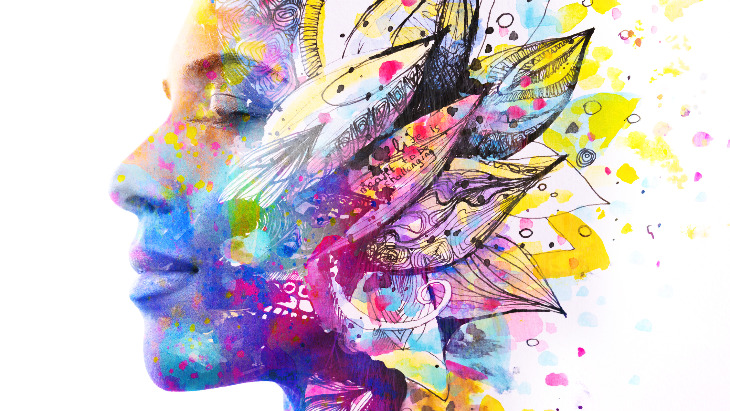 Passover’s Message of Hope in the Aftermath of Oct. 7
Passover’s Message of Hope in the Aftermath of Oct. 7


5 min read
Maybe we don’t have to travel so far afield to find balance and mindfulness.
At the beginning of the century, military doctors treating soldiers fighting in World War I were confounded by a mysterious sickness. Although the shooting and bombing had ended, soldiers were routinely plagued with nightmares of terrifying traumatic flashbacks. It took practitioners over a century to change their diagnosis from “shell shock” to what we now know as post-traumatic stress disorder (PTSD).
The soldiers scattered across Europe in the early-1900s were not the first to suffer such fates. Mesopotamian cuneiform tablets from 3,000 years ago warn of warriors being “hexed by ghosts,” while American Civil War doctors thought shaky veterans vulnerable to “soldier’s heart.”
Many suffered as a result of humanity grasping into the mental health abyss throughout history. That is why the creation of Mental Health Awareness Month back in 1949 (celebrated every May) has been so influential in shifting our understanding. Whereas earlier decades saw the stigmatization of those suffering internally, today there are massive campaigns raising awareness and millions of dollars to help the cause.
Ploughing the once-stigmatized fields of mental health has brought new approaches. Meditation, mindfulness, and yoga – practices imported from Eastern cultures – whittled their way into Western consciousness by the 1960s. Timothy Leary’s invocation to “Turn on, tune in, and drop out” defined the hippie generation. Transcendental meditation became a thing; The Beatles went to ashrams; words such as “chakra” and “guru” became part of the American lexicon. But in the dash for the new and exotic in the name of fighting “The Man,” anything deemed ‘old’ or ‘stale’ was disregarded.
Inevitably, American Jews became a leading cultural force behind the Summer of Love. Many of the leading figures such as Allen Ginsberg and Richard Alpert (a.k.a. Ram Dass) were Jewish. “There was something in me that deeply craved a spiritual life but that did not find it in the synagogue at that time,” Aryeh Coopersmith wrote in Holy Book: A Journey from Haight Steet to Jerusalem. “When we were at Haight Street and there was LSD and there were other young people of Jewish background and some of the spiritual leaders were there, we were fuel for that [hippie] fire.
Within this milieu, a new movement – Jewish Renewal – sought to bridge the gap by blending Jewish mysticism with “yoga, chanting, and meditation.” Yet, it never took off. Looking outward never solved the generational angst of those searching for deeper answers. Many hippies “sold out” by the 1980s and became well-heeled yuppies.
Too often, American Jews left their Judaism in the closet. They never dusted off what their parents or grandparents gave them and tried it on. Miriam Grossman’s spiritual odyssey in “Antidote for the Existential Blues” speaks for many of this generation. Searching for deeper answers, as Tzivia Emmer retells, “The meager Judaism to which she [Grossman] was exposed did not, of course, give her that understanding.” As Grossman scrambles to find higher meaning throughout her life looking beyond Judaism, it ultimately was Judaism which brought her serenity.
“I didn’t need a guru, I needed my grandmother!”
“I didn’t need a guru, Dr. Grossman finally exclaims, I needed my grandmother! What could our grandmothers have told us? Would we have believed them? Perhaps they were there all along, guiding and pushing in the right direction. We are the sum not only of our own experience but of the genetic and cultural currents of many generations,” Emmer writes.
We should remind ourselves of Grossman’s wisdom every May as our spotlight returns to that of mental health and mindfulness. While the proliferation of amazing meditation apps such as Headspace and Calm have improved the well-being of thousands of people working to improve their mental hygiene, we ought never to forget the abundance of Jewish wisdom and practice.
I asked my rabbi last week about what Judaism had to say about being present, mindfulness, and meditation. After all, when we usually think of such things its usually people in yoga pants breathing incense and rarely Zen black hatters. But, I was proven wonderfully wrong.
Breathwork is a powerful way to quiet running thoughts and return to the presence. To feel one’s body, to hear sounds we block out, or sensations we’ve become dulled to. Correcting this negative feedback loop goes back to the Book of Psalms.
“Indeed, God can be found in literally each and every breath [stress added] that we take,” Rabbi Efrem Goldberg writes in Aish.com. “Kol Ha’Neshama tehalleil Kah, every soul must praise God. Our rabbis (Midrash Rabbah) tell us, don’t read it as kol ha’neshama, every soul, but kol ha’neshima, with each breath, we must praise God.”
To modern eyes it might look strange that this comes from the Book of Psalms instead of the Bhagavad Gita, its wisdom is just as prescient. To let go of one’s stress, worries, anxieties, and fears, we must return to the presence. To stop living in our heads and start living in the moment. It starts with a single breath.
